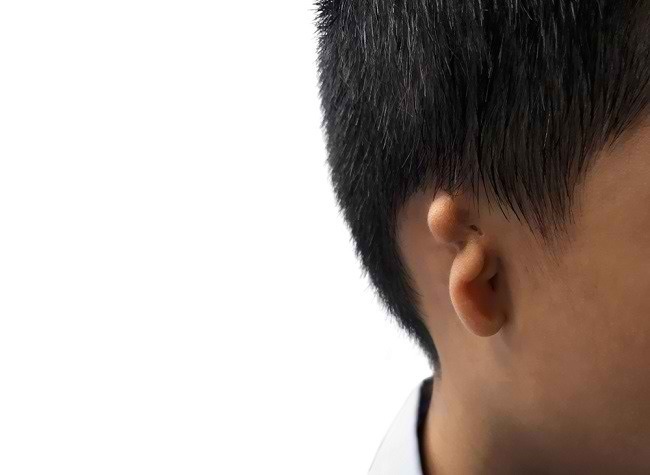Recognizing Microtia, Deformities of the Earlobe
Microtia is a congenital birth defect that causes babies to be born with an abnormal ear shape. Most microtia sufferers will experience hearing loss. Actually , what causes microtia and can this condition be treated?
Microtia is an infrequent ear disease in infants. This congenital abnormality is estimated to occur in only 1 in 8,000 births.

Microtia generally affects the external ear, precisely the shape of the auricle, but there are also cases of microtia that cause babies born without leaves and ear canal. Congenital or congenital abnormalities in the ear can occur in one ear or both ears.
Several Types of Microtia
Microtia occurs since the baby is still in the womb, especially in the early weeks or first trimester of pregnancy. To detect the shape of the ear and other organs in the fetus, the doctor can do an ultrasound examination of the pregnancy.
Microtia is divided into four types. The greater the type, the greater the severity. The following are the four types of microtia:
- Type 1: The ear canal and lobe look normal, but the size is slightly smaller than the normal earlobe size.
- Type 2: Some parts of the earlobe are missing and the hole looks very narrow.
- Type 3: Earlobe shaped like a nut and no ear holes.
- Type 4: Babies do not have external ears including ears and ear canals. This condition is also called anotia.
Causes and Risk Factors for Microtia Disease
Microtia can occur when there are abnormalities or genetic mutations in the fetus in the womb that make the form of ear problems. This genetic disorder can occur even though the baby's parents do not have a genetic problem.
In addition, microtia is also thought to have links to genetic disorders that affect the development of facial features, such as:
- Goldenhar syndrome, a genetic disease that causes babies to be born with imperfect shapes of ears, nose, lips and jaws.
- Treacher Collins Syndrome, a condition that affects the shape of the cheekbones, jaw and chin.
- Hemifacial Microsomia, which is a disorder characterized by one side of the lower face being abnormal.
Although it can occur to anyone, microtia is more prone to be experienced by babies born to mothers with certain conditions or habits, such as:
- Suffering from diabetes.
- Suffers rubella in the first trimester.
- Have nutritional deficiencies during pregnancy, especially folic acid and carbohydrate deficiency.
- Many consume alcoholic beverages while pregnant.
- Use drugs during pregnancy, such as thalidomide and isotretinoin.
Impact of Microtia on Sufferers
Due to imperfect ear shape, sufferers of microtia are prone to hearing loss. This is because the sound cannot reach the middle and inner ear easily. A common hearing problem affecting infants or children with microtia is conductive deafness.
The more severe the microtia occurs, the more severe the hearing loss is felt by the patient. Without early treatment, microtia that causes hearing loss can make a child late or difficult to talk.
Microtia also causes children to feel less confident and withdraw from relationships because they are ashamed of the shape of their ears. The role of parents and family is needed to help children understand their conditions, so that children remain confident with their physical limitations.
To prevent the severity of hearing loss and difficulty speaking, children need to be seen by a doctor so that treatment can be given.
What is the treatment for microtia?
Handling of microtia depends on the severity. If the child has only mild ear deformities without hearing loss, treatment may not be necessary.
However, if the ear defect is severe enough and has disrupted hearing function or even caused deafness, then the ear surgery step needs to be done.
There are several operating methods that can be performed to treat microtia, namely:
1. Artificial ear graft
In this procedure, the doctor will take part of the patient's ribs to be shaped like auricle. These artificial earlobe, then grafted on the ear skin that has abnormalities. Ear graft is usually only done after the child is older than 6 years.
2. Prosthetic ear insertion
Installation of prosthetic ears or fake ears is the same as an artificial ear graft. Only, the ear will be grafted using prosthetic material (artificial).
In this procedure, the fake ear is affixed with medical adhesive or special screws. The use of false ears is suitable for patients who are not likely to undergo a graft procedure or if the graft procedure fails.
3. Hearing aid implants
Before installing the hearing aid, the doctor will determine the severity of the hearing loss by conducting a hearing test. If the test results show that hearing loss is quite severe, then the doctor can work on installing a hearing aid implant to improve the patient's hearing function.
Children born with microtia can still lead a normal life. In fact, some of them can grow up healthy and develop optimally like other children. However, if the handling is too late, then the child can be more difficult to learn and more at risk for developmental disorders.
Therefore, babies or children who suffer from microtia need to get an examination by an ENT specialist as early as possible. The sooner this condition is detected and treated, the better the chance for the child to be able to hear and experience normal growth and development. Label : Health
Comments
Post a Comment